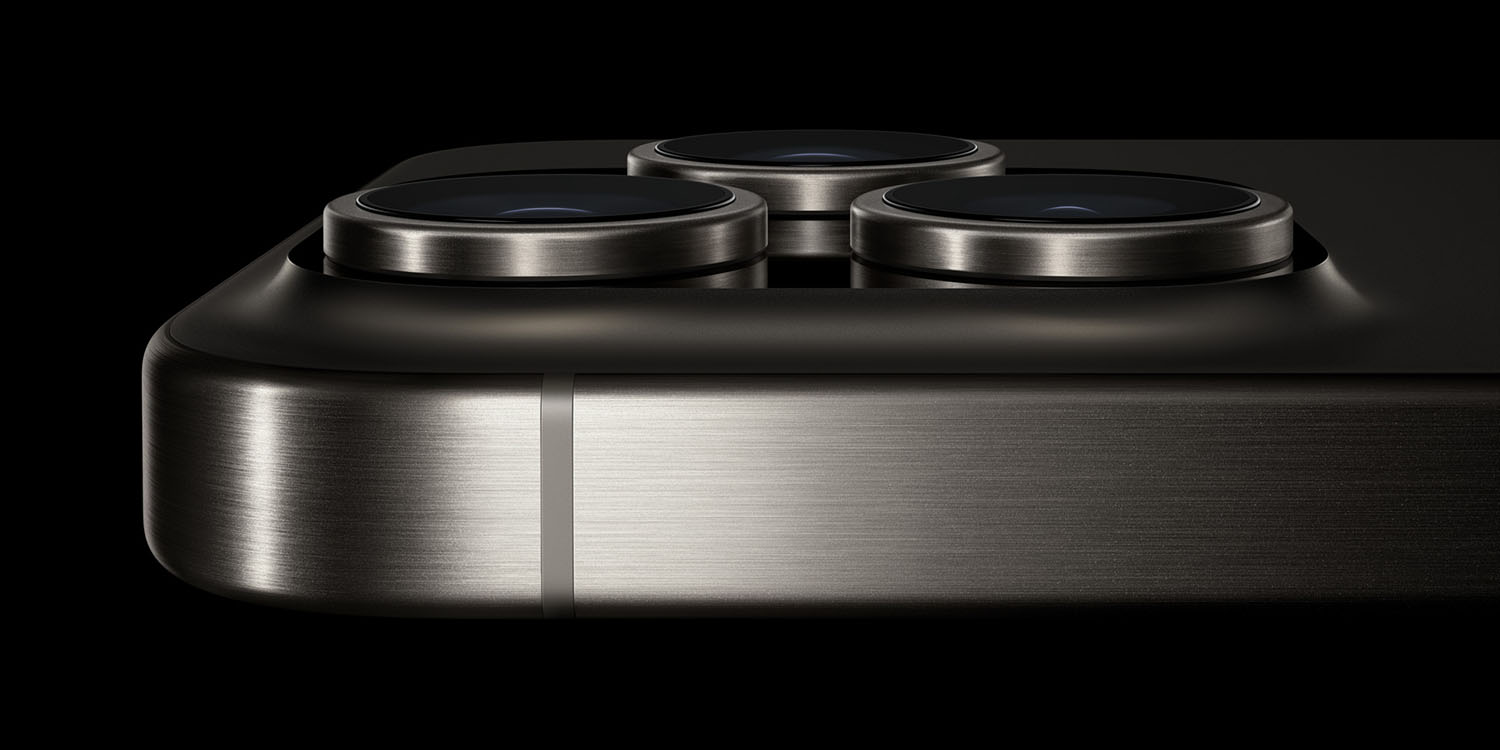
The advanced glass-plastic hybrid lens used in the iPhone 15 Pro Max is likely to be adopted by high-end Android phones, according to a new investment note by Apple analyst Ming-Chi Kuo.
The hybrid design brings some of the benefits of glass lenses to smartphones, which usually have to use plastic lenses …
Most smartphones use plastic lenses
Glass lenses offer the highest optical quality, but have a number of drawbacks when used in a smartphone.
Glass elements typically have to be larger than plastic ones, taking up more room in a thin device where space is at a premium. Glass is heavier than plastic, in a device where even tiny weight differences count. That extra weight would also require beefier motors for optical image stabilization, again adding to weight, and power consumption. Finally, glass is more fragile, meaning a greater likelihood of internal damage to lens elements when a phone is dropped.
This is the reason that even Apple has used plastic lenses up to and including the iPhone 15 line-up – with one exception.
Glass-plastic hybrid lens in iPhone 15 Pro Max
The tetraprism lens used in the iPhone 15 Pro Max is a glass-plastic hybrid known as 1G3P – that is, one glass element, three plastic. This is a compromise designed to bring some of the quality gain from a glass element, without the disadvantages of an all-glass design.
Many of the elements in a lens are there purely to correct for various types of distortion. Using at least one glass element eliminates some of those distortions, allowing for fewer elements.
In a new investment note, Kuo says that following the adoption of hybrid lenses by Apple and Huawei, other premium smartphone brands are likely to do the same.
The use of glass-plastic hybrid lenses in the iPhone 15 Pro Max and P70 Art indicates new critical trends in the lens industry, including:
1) The use of molding/spherical glass in glass-plastic hybrid lenses instead of the lower performance wafer-level glass (WLG)
2) 8P lenses facing competition from 1G6P, with the latter’s advantages in lower height and gradually improving cost difference compared to 8P
3) The glass-plastic hybrid lens as a better solution to solve lens deformation caused by CCM design
4) After Apple and Huawei’s use of glass-plastic hybrid lenses, other brands’ high-end models are likely to follow suit in the future.
Apple’s tetraprism lens is made by Largan, but the glass element is outsourced to another supplier. Largan is working on developing its own glass element to meet Apple’s quality requirements, with the aim of making the entire module by 2025 or 2026.
The tetraprism lens currently exclusive to the iPhone 15 Pro Max is expected to come to the iPhone 16 Pro next year, thanks to improved yields. Largan owns patents relating to the lens or its production, and is engaged in a legal battle intended to fend off potential competition for Apple’s business.
We recently noted that Kuo is a less reliable source than has been the case in the past, but is generally on more solid ground with this type of supply-chain report.
FTC: We use income earning auto affiliate links. More.



Comments